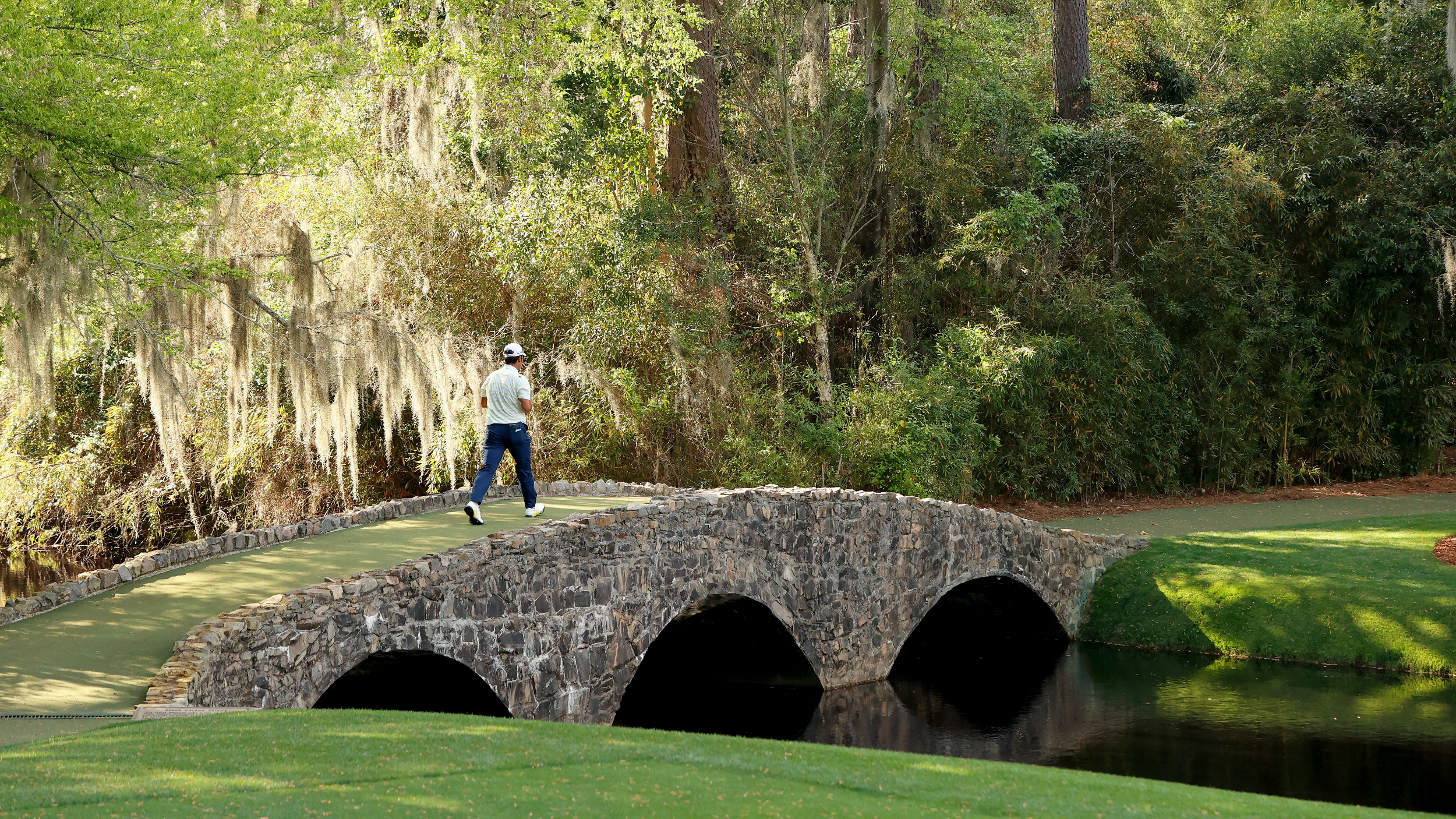The Stories Behind Augusta National’s Three Historic Bridges
Augusta National’s three bridges are among the most famous landmarks in golf, but what are the stories behind them?


Augusta National is one of the most beloved and recognisable venues in golf, helped by its many iconic landmarks, from the tree-lined Magnolia Lane that leads you in to the big oak tree beside the clubhouse near the 18th green.
Among its famous features are also three historic bridges, and they're all named after legends of the game, but what is the story behind each?
The Hogan Bridge

The Hogan Bridge is named for Ben Hogan's overall performance at the 1953 edition
One of two stone bridges crossing Rae’s Creek, the Hogan Bridge takes players to the 12th green, and was dedicated on 2 April 1958 to Ben Hogan’s 1953 performance at the tournament.
In that edition, Hogan completed a then-record 14-under 274, which comprised rounds of 70, 69, 66 and 69. That beat the previous record by five as he took his second Masters title.
The plaque by the bridge states the score “may even stand for all time as the record for The Masters tournament.”
That wasn’t the case as, seven years after its unveiling, Jack Nicklaus produced a four-round total of 271. However, Hogan remains one of only 13 players to have recorded such a low score at the event, with the record now held by Dustin Johnson for his 20-under 268 in 2020.
The Nelson Bridge

The Nelson Bridge crosses Rae's Creek
The other bridge that crosses Rae's Creek, this time taking players from the 13th tee to the fairway, was dedicated the Nelson Bridge on the same day as the Hogan Bridge. That was to commemorate a stunning effort on the 12th and 13th holes by Byron Nelson 21 years earlier.
Subscribe to the Golf Monthly newsletter to stay up to date with all the latest tour news, equipment news, reviews, head-to-heads and buyer’s guides from our team of experienced experts.
Nelson had entered the final round tied for third behind leader Ralph Guldahl, but gained six shots in just two holes – the 12th and 13th, thanks to a long birdie putt on the first of those and a chip-in eagle on the 13th. In contrast, Guldahl only managed a double-bogey, bogey on the holes, and Nelson eventually won by two for his first Major title.
The Sarazen Bridge

The Sarazen Bridge is dedicated to Gene Sarazen's 1935 "shot that was heard around the world"
A big reason The Masters holds its status as one of the most famous events in sport can be traced back to a moment at the 1935 edition. That year, Gene Sarazen was making his first appearance at the tournament, which, at the time, wasn’t held in the esteem it is today.
That all began to change on the 15th hole of Sarazen’s final round. He trailed clubhouse leader Craig Wood by three, and needed something special to remain in contention with holes running out.
He produced it on his second shot of the par 5, which became known as “the shot that was heard around the world,” and set the tournament on a trajectory that eventually saw it reach its lofty status.
With his ball 235 yards from the hole, Sarazen played his shot with a 4-wood. The ball hit the green before rolling into the hole for an albatross.
That wiped out Wood’s advantage, and left the two battling it out in a 36 hole play-off, which Sarazen won - making him one of just three players to this day who won The Masters on debut.
The bridge, which spans the pond in front of the 15th green, was designed by architect H. Lowrey Stulb and, on 6 April 1955, was named in honor of what remains one of the most famous golfing moments of all time.

Mike has over 25 years of experience in journalism, including writing on a range of sports throughout that time, such as golf, football and cricket. Now a freelance staff writer for Golf Monthly, he is dedicated to covering the game's most newsworthy stories.
He has written hundreds of articles on the game, from features offering insights into how members of the public can play some of the world's most revered courses, to breaking news stories affecting everything from the PGA Tour and LIV Golf to developmental Tours and the amateur game.
Mike grew up in East Yorkshire and began his career in journalism in 1997. He then moved to London in 2003 as his career flourished, and nowadays resides in New Brunswick, Canada, where he and his wife raise their young family less than a mile from his local course.
Kevin Cook’s acclaimed 2007 biography, Tommy’s Honour, about golf’s founding father and son, remains one of his all-time favourite sports books.